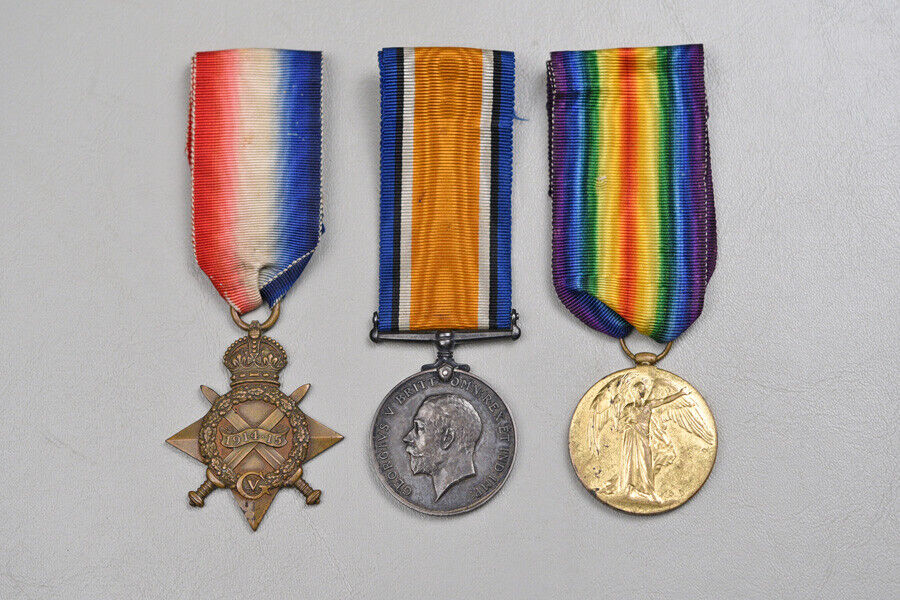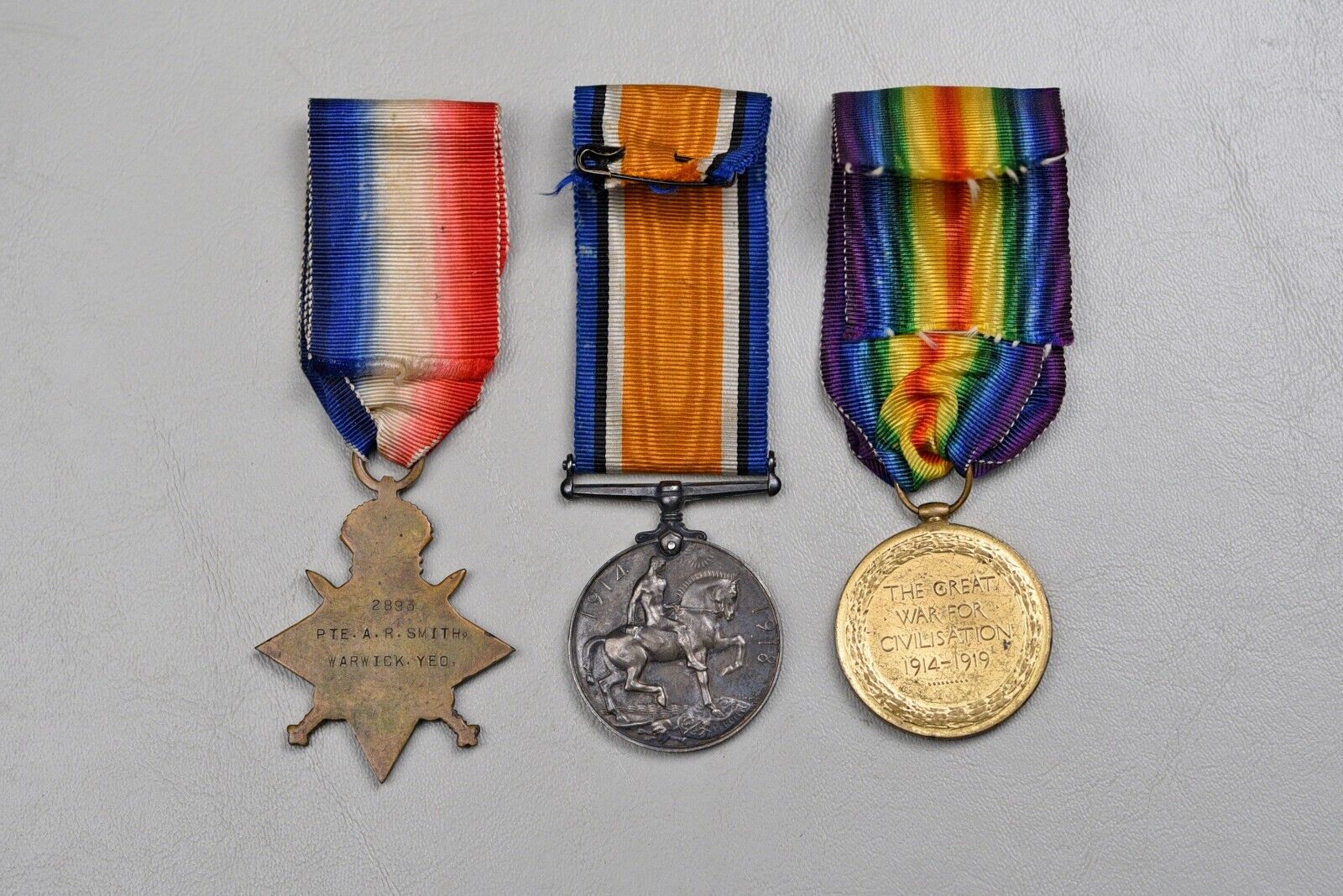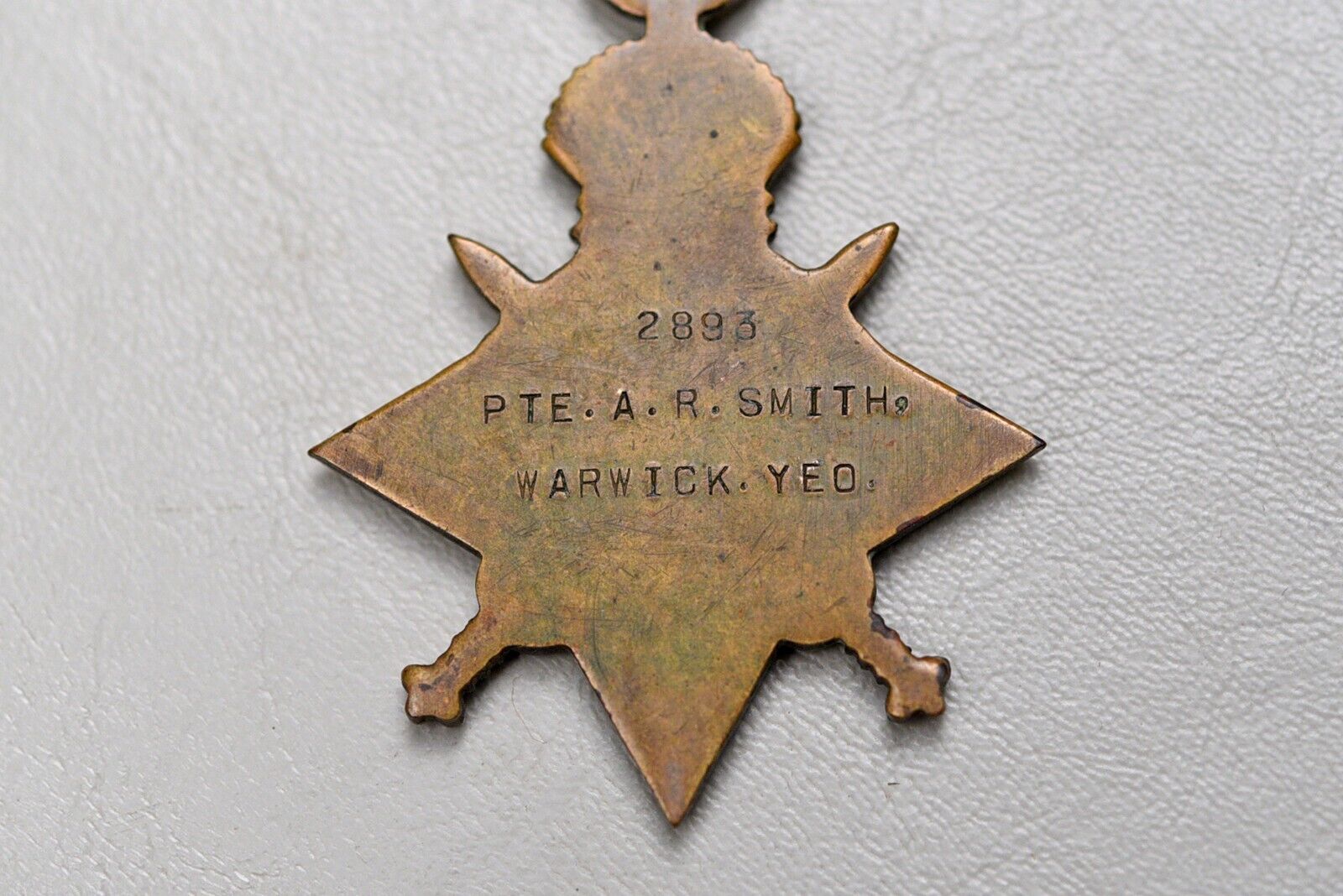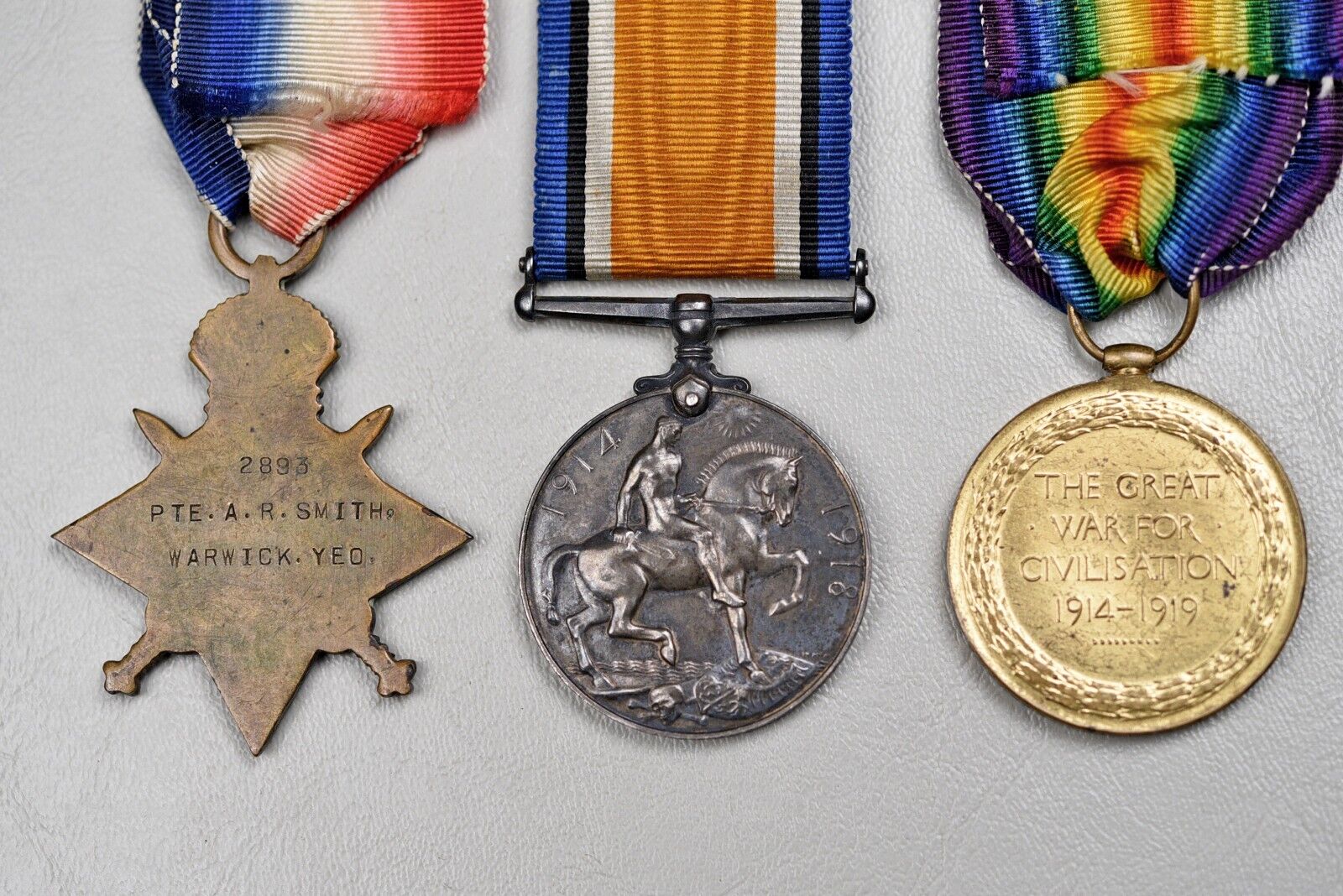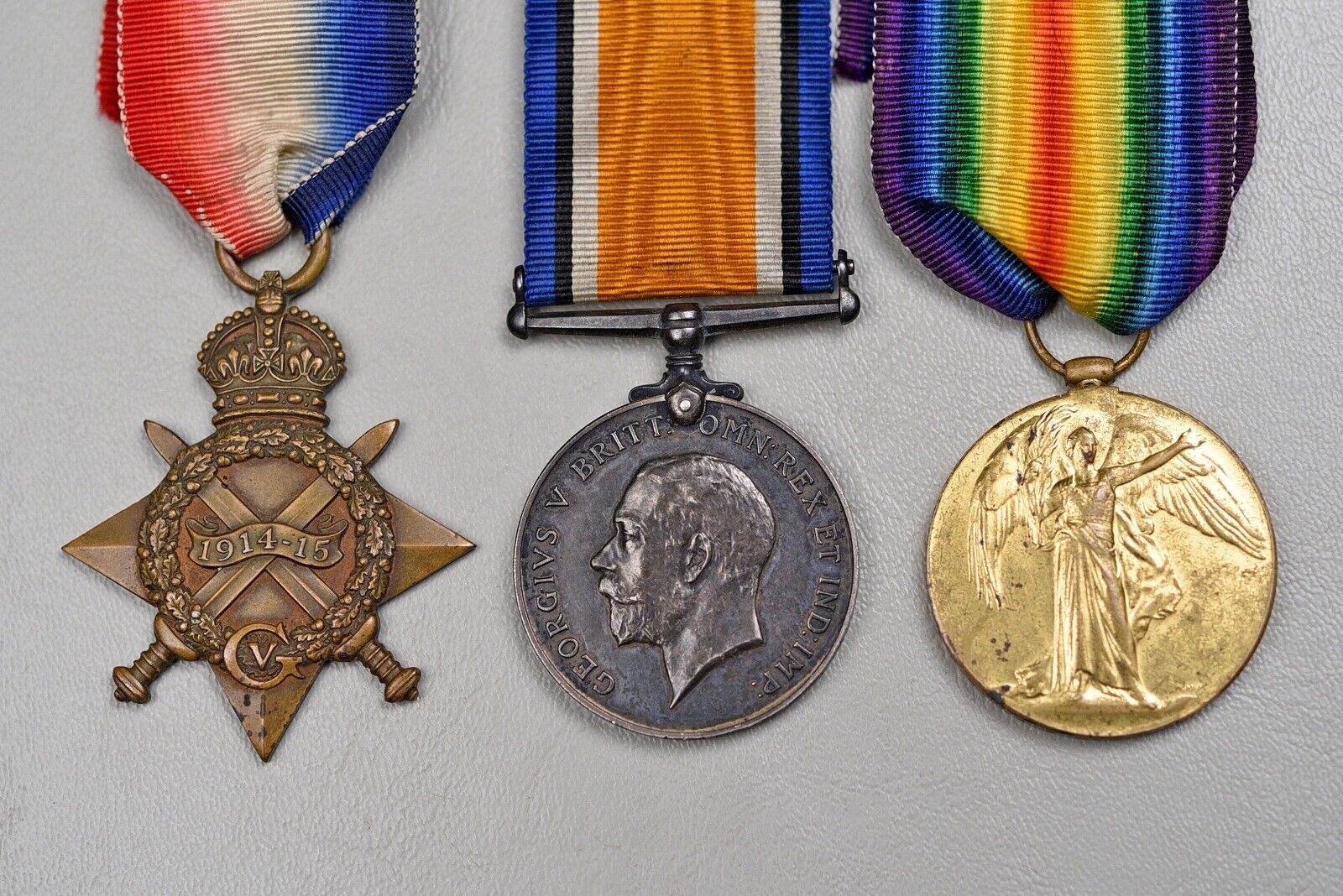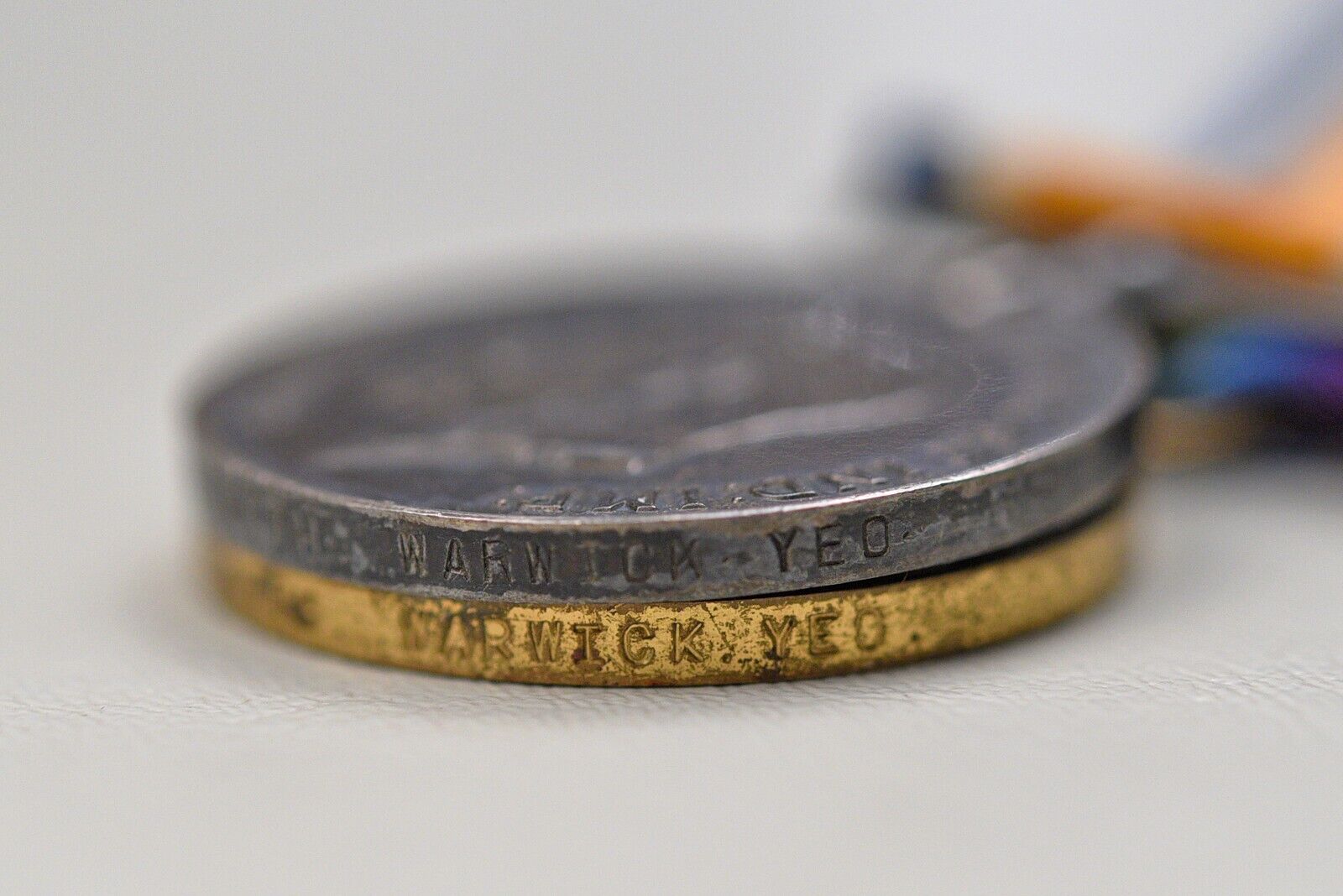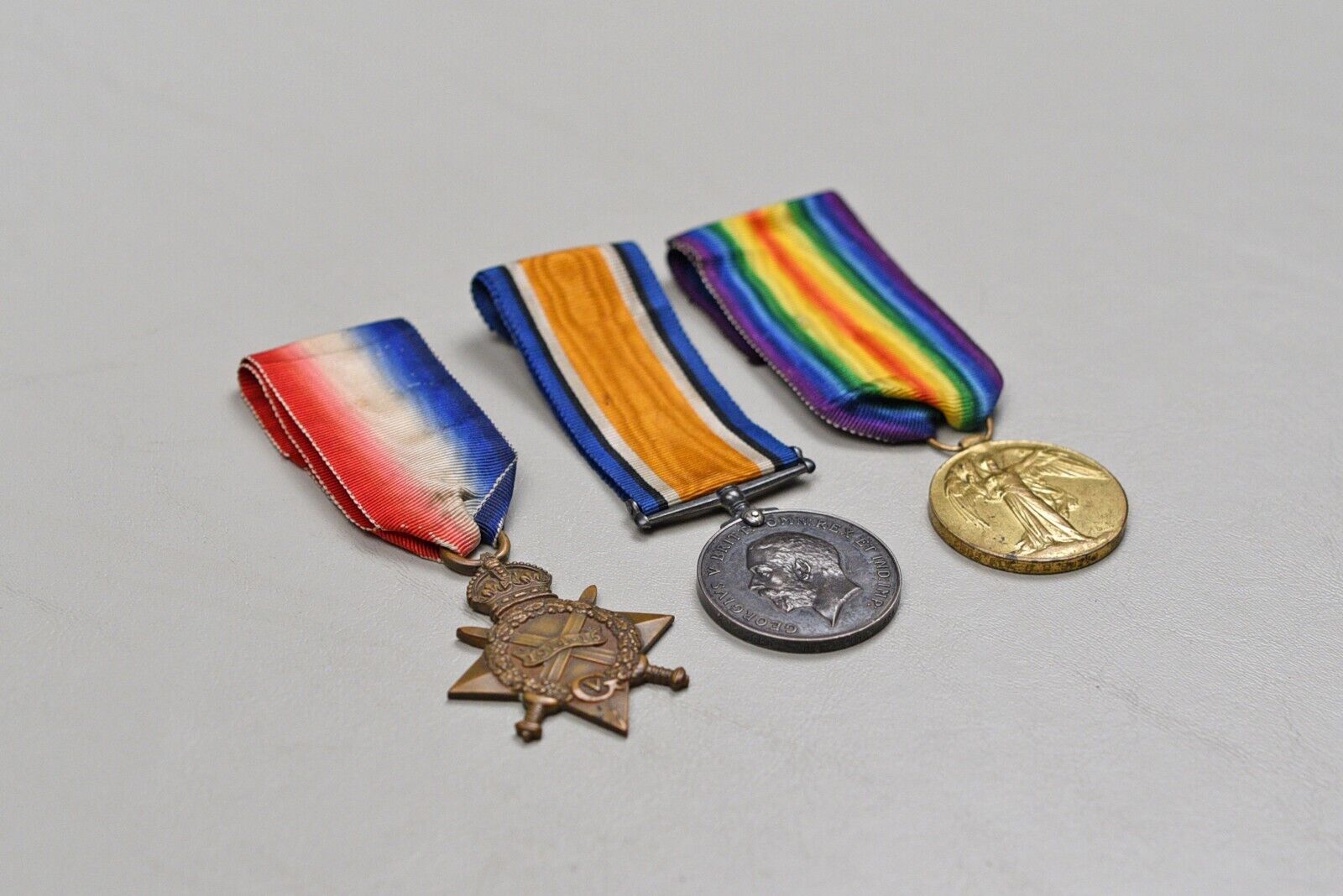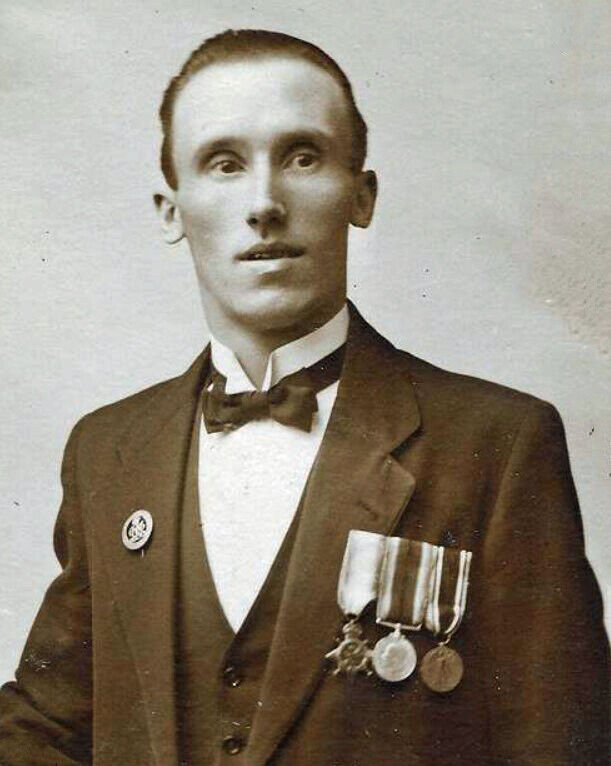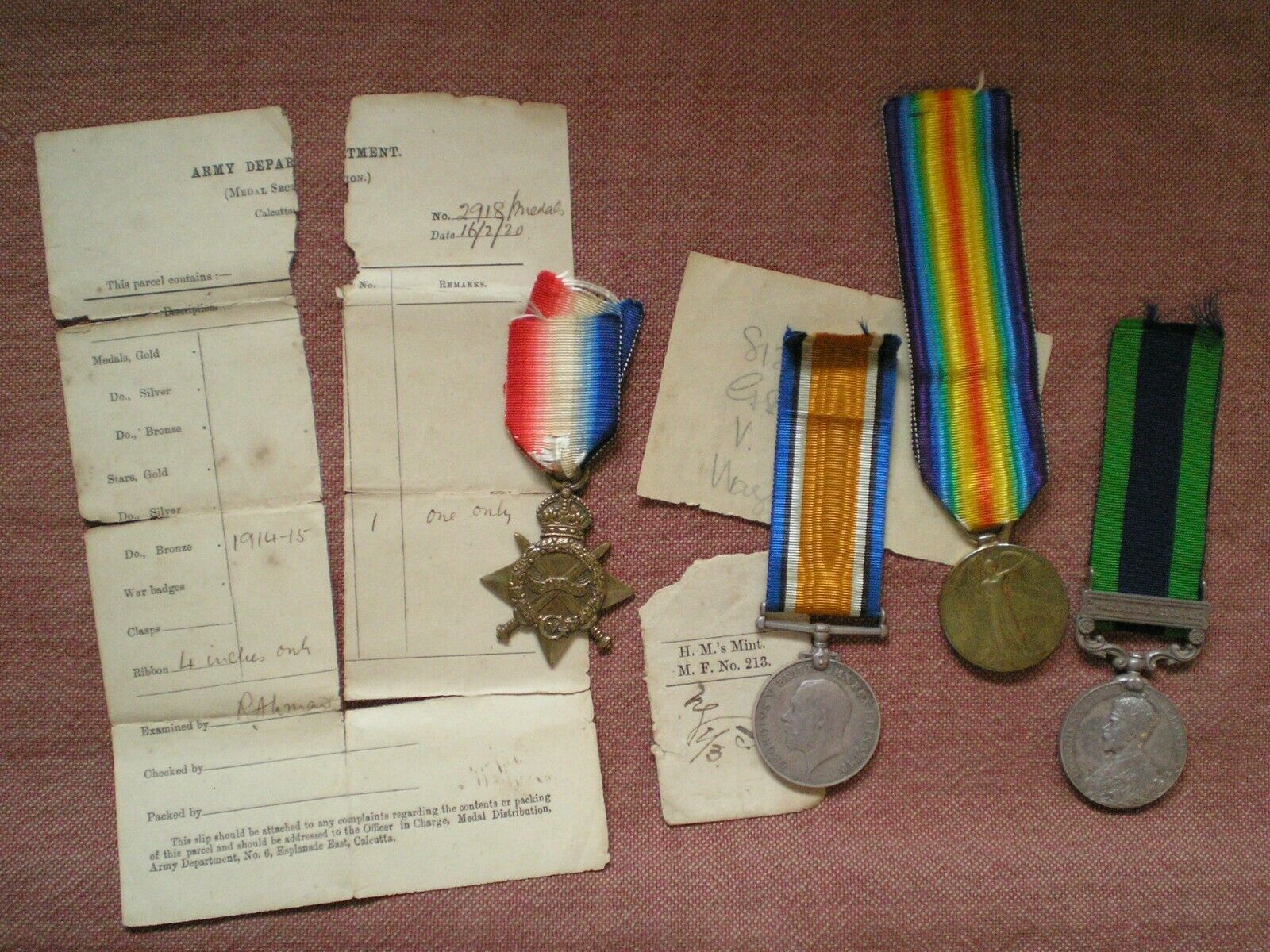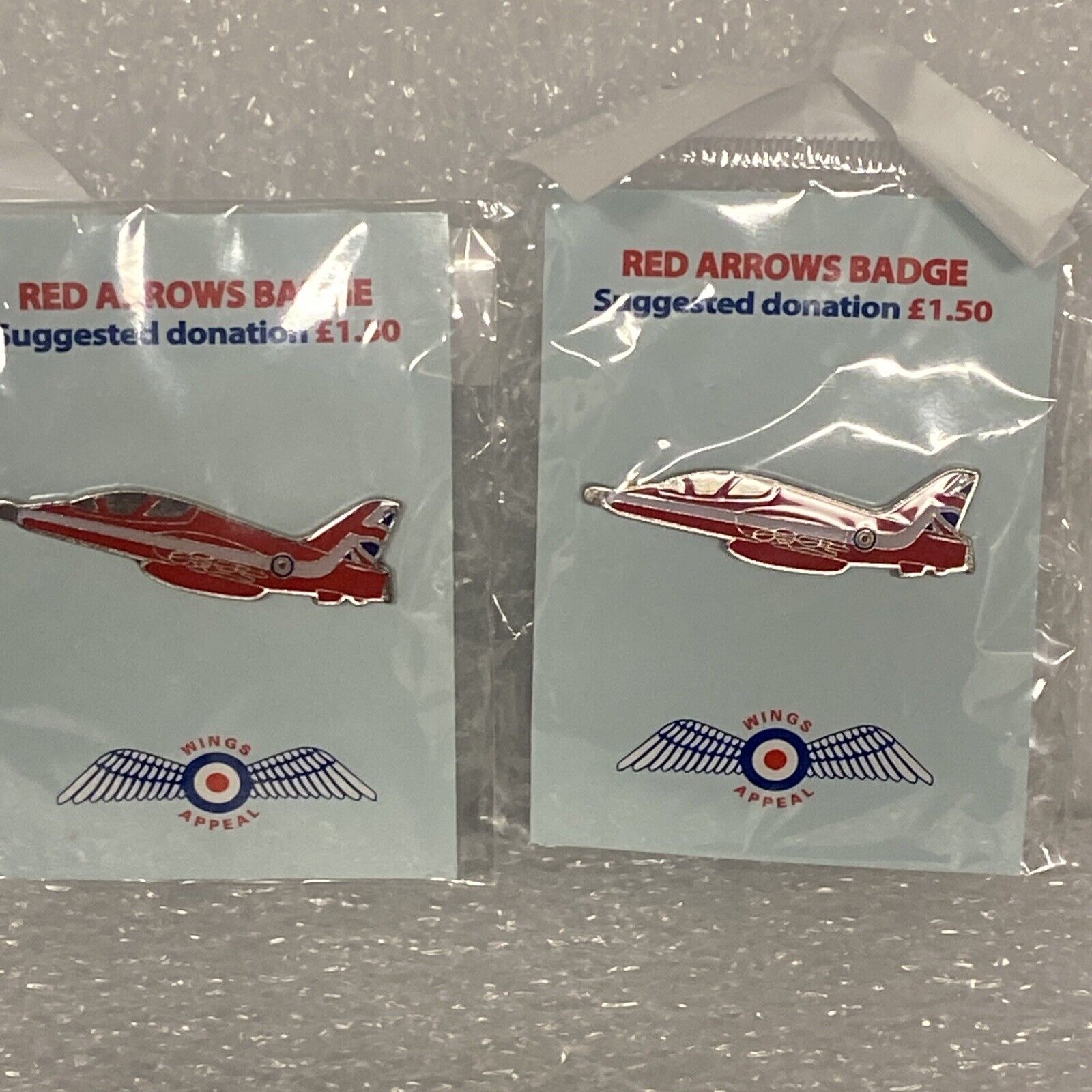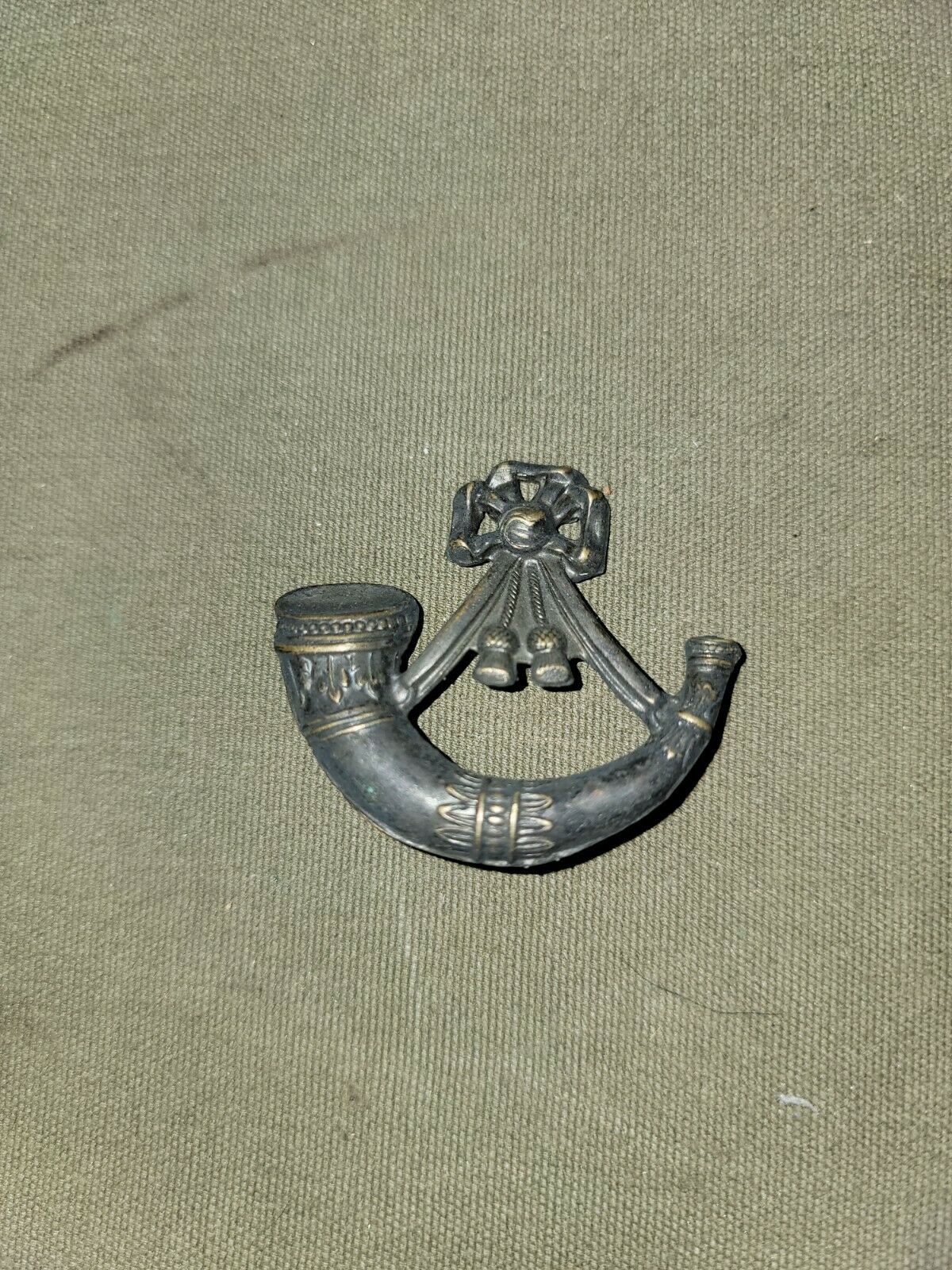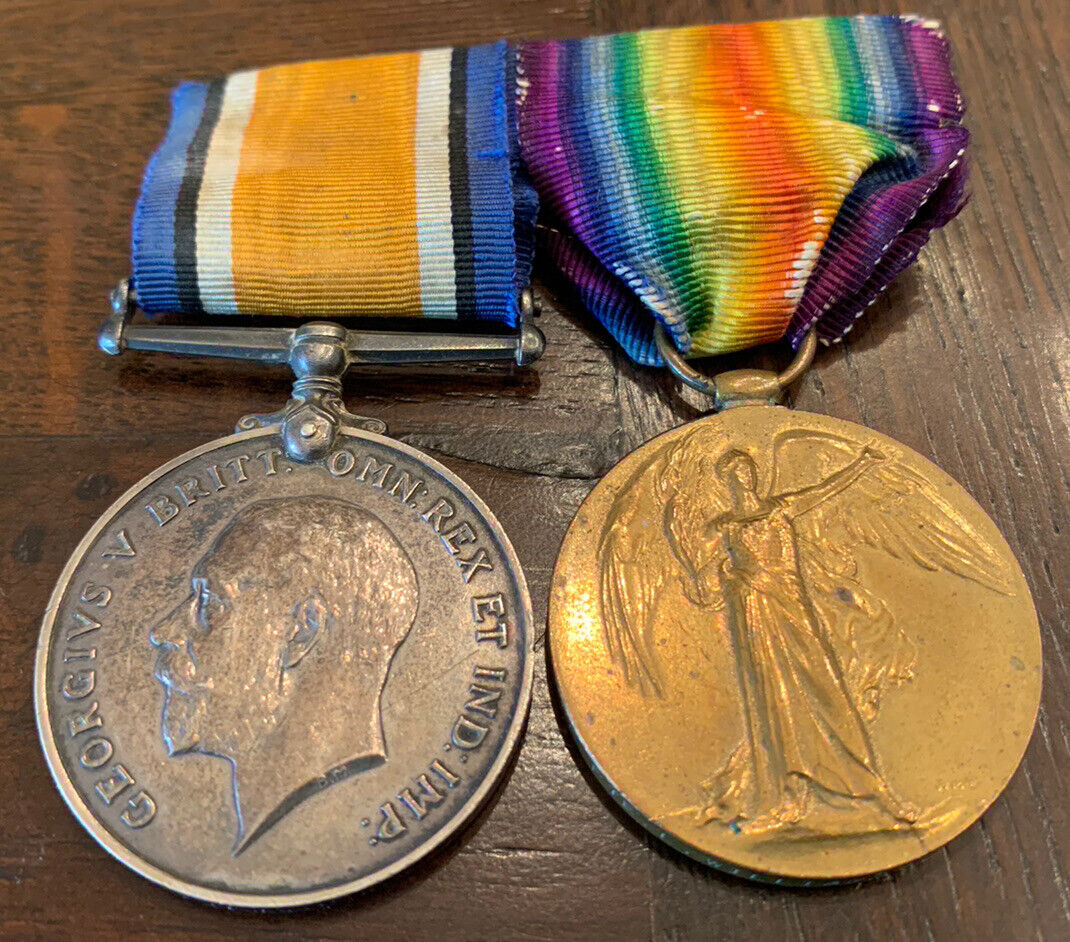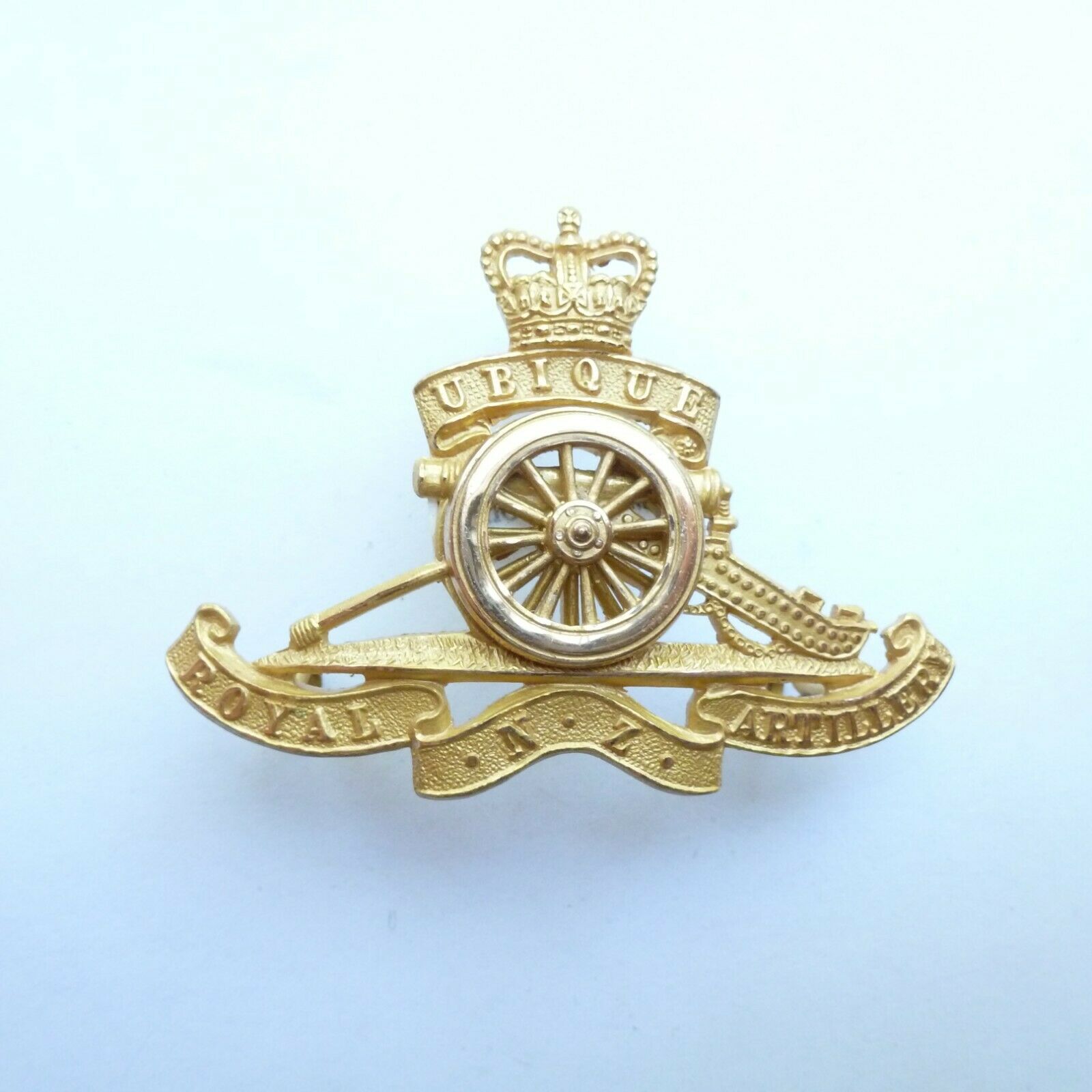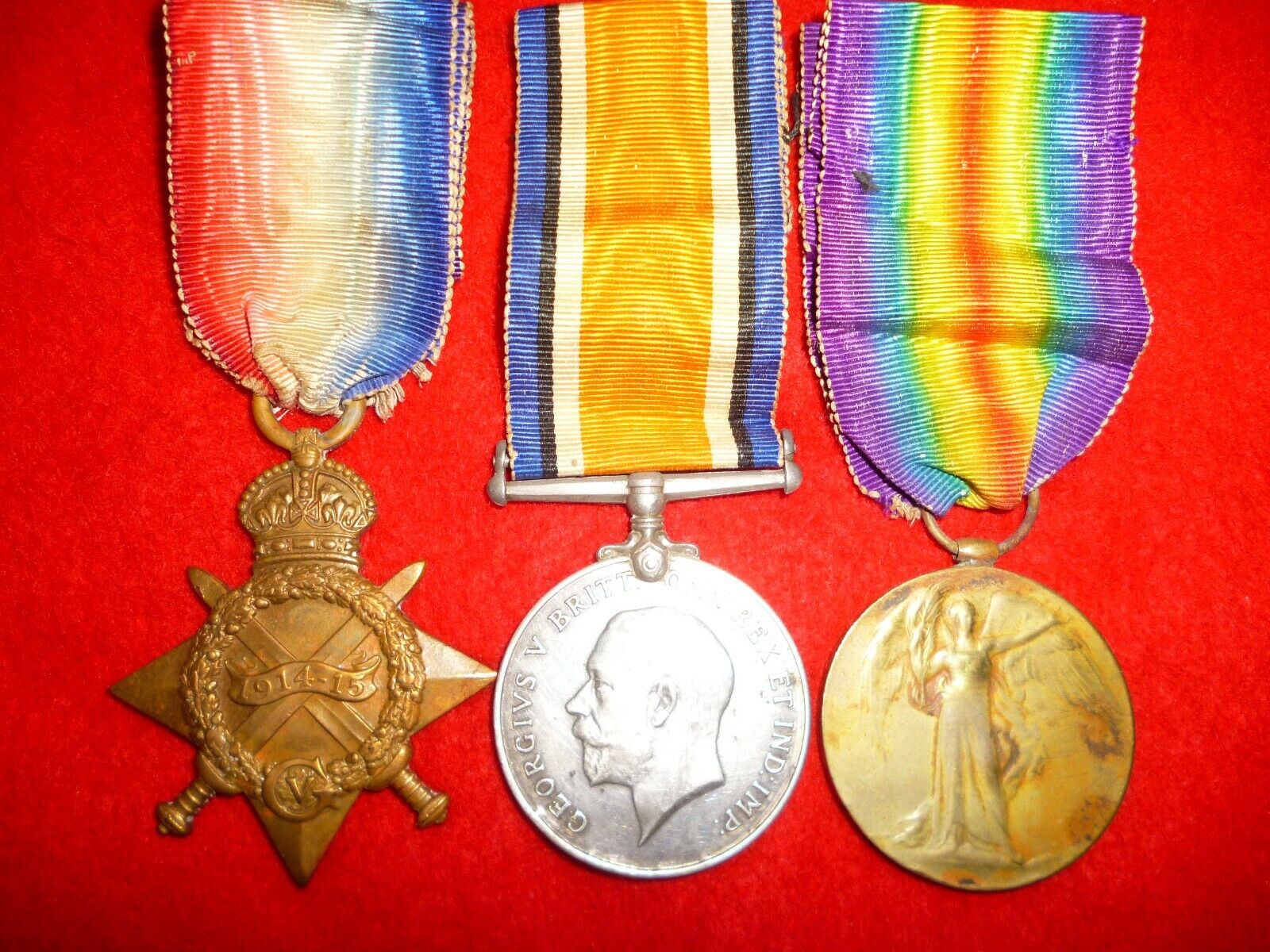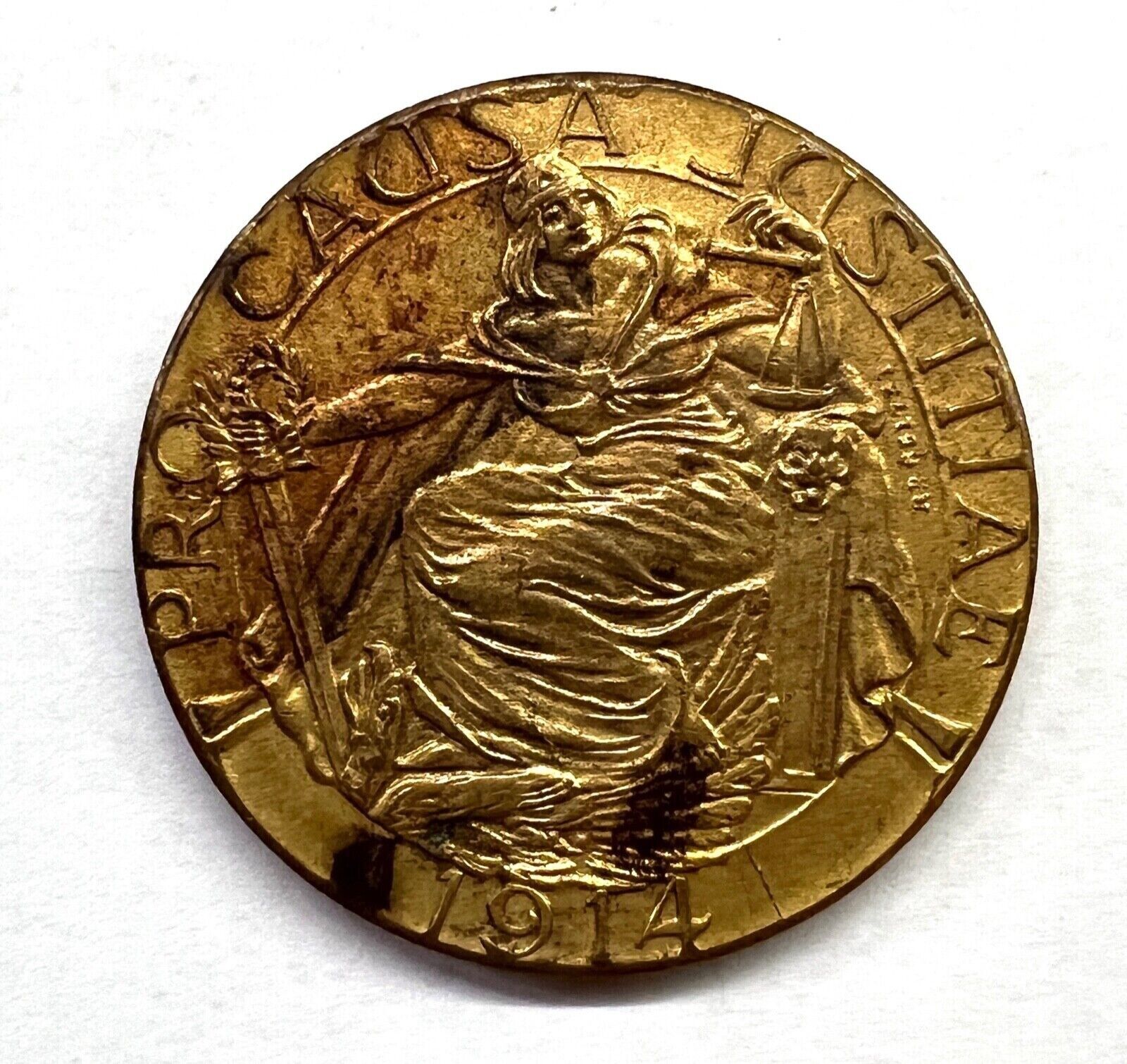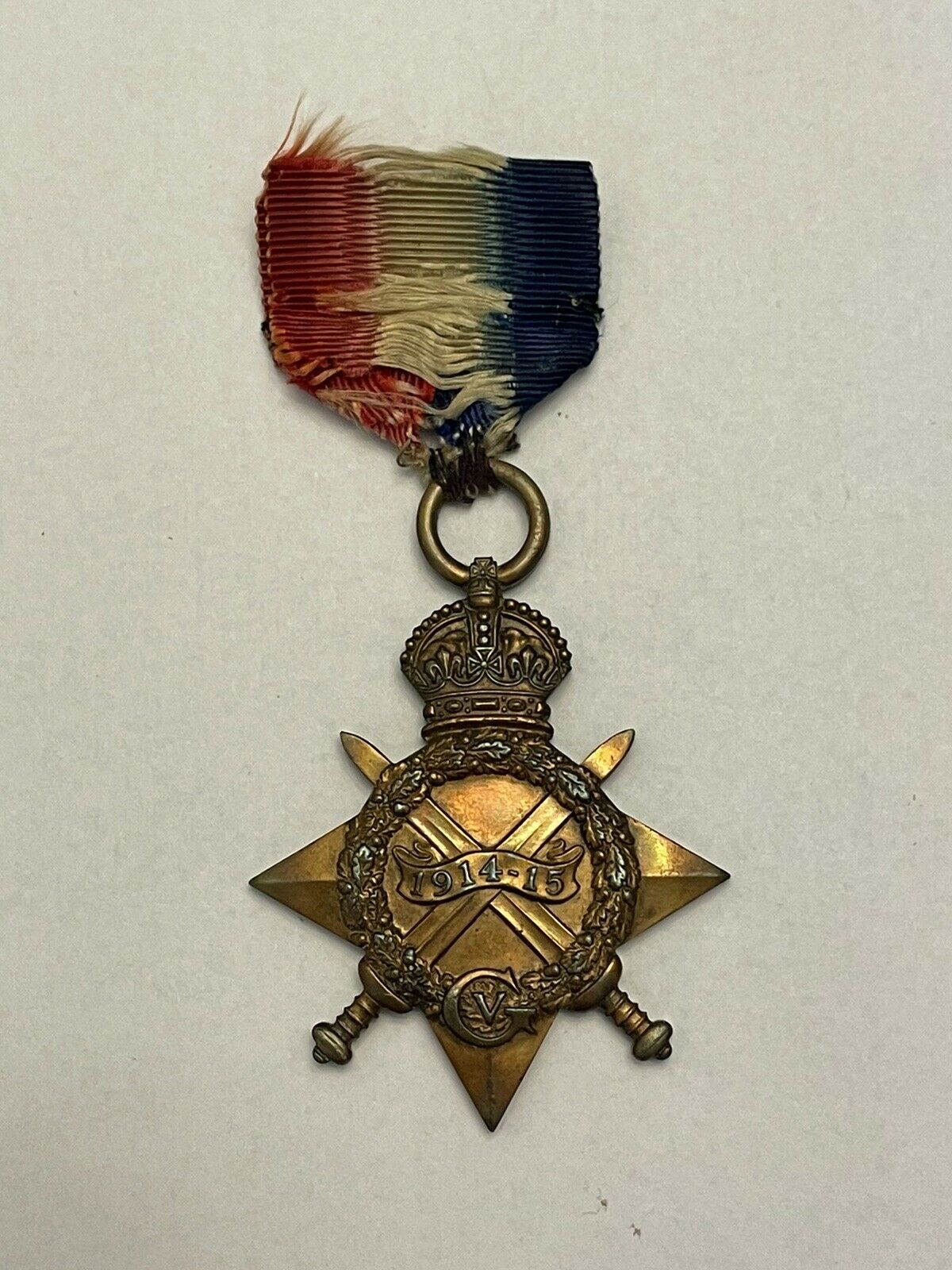-40%
WWI BRITISH 1914-15 STAR, WAR MEDAL & VICTORY MEDAL TRIO - GALLIPOLI
$ 208.56
- Description
- Size Guide
Description
This is a fine World War I British 1914-15 Star Medal Trio that is in excellent condition. They were awarded to 2893 Pte. Arthur Richard Smith, Warwickshire Yeomanry. The trio consists of the 1914-1915 Star, the 1914-1918 War Medal, and the World War I Victory Medal. The medals are mounted on their original ribbons with the planchets on each possessing an attractive age toned patina. They are impressed in the correct contemporary style lettering with, ‘2893 Pte. A. R. Smith, Warwick Yeo.’ The Warwickshire Yeomanry took part in many of the hardest battles fought battles of the Middle Eastern campaigns, to include Gallipoli, and distinguished itself on many occasions. This group was awarded to one of the members of the regiment who survived all of them. It is truly an historic medal group that remains in excellent, undamaged condition.From Wikipedia:
The regiment mobilized in August 1914, but remained in England until 1915, when they sailed for Egypt with 2nd Mounted Division. During the move, the horse transport Wayfarer was torpedoed on 11 April 1915 having just left Avonmouth; although she did not sink, the horses had to be rescued. Volunteers of the regiment saved 763 horses, receiving a Military Cross and twelve Meritorious Service Medals. They arrived in Egypt on 24 April, before being moved to Gallipoli for service as dismounted infantry. They landed at Suvla Bay on 18 August and saw action at the Battle of Scimitar Hill, on 21 August. The regiment took heavy losses but remained in the line until withdrawn at the end of October. It was assigned to the Australian Mounted Division in February 1917, serving in Palestine as cavalry, and seeing action at the First and Second Battles of Gaza, the Charge at Huj as well as the Battle of Mughar Ridge and the Battle of Jerusalem. It was withdrawn in April 1918 and amalgamated with the 1/1st South Nottinghamshire Hussars into B Battalion, Machine Gun Corps, soon renamed the 100th (Warwickshire and South Nottinghamshire Yeomanry) Battalion, Machine Gun Corps, which would serve on the Western Front for the remainder of the war. On 27 May 1918 this unit was on board the transport vessel SS Leasowe Castle which was sunk by SM UB-51 with a loss of 101 lives. At the Armistice, it was serving as Army Troops with the Fourth Army.
Of note, on Thursday 8th November 1917 the Regiment took part in the terrifying charge on a ridge at Huj against machine gun fire and field guns. The charge was a great success and is considered to have been one of the finest moments of the British Cavalry history. It became known as “The Last Cavalry Charge”. Altogether, 163 officers and men took part in the charge, seventy-six from the Warwickshire Yeomanry and eighty-seven from The Worcestershire Yeomanry. Seventeen of The Warwickshire Yeomanry were killed and another eighteen wounded. Forty five of their seventy-six horses were also killed.
7958
